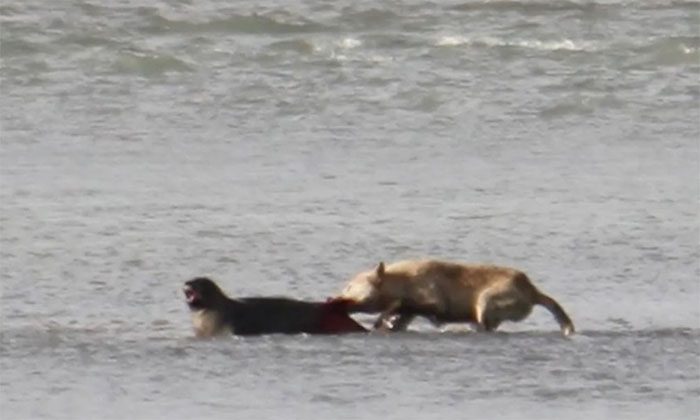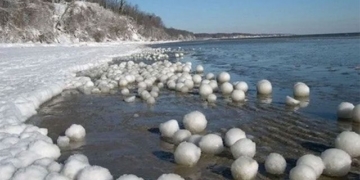Scientists Discover Gray Wolves’ Seal Hunting and Feeding Behavior, Revealing Their Flexible and Diverse Diet.
(Video: IFL Science).
Observations of wolves in Katmai National Park have revealed that they are targeting a new prey: marine mammals. Scientists have documented gray wolves (Canis lupus) killing and feeding on both harbor seals (Phoca vitulina) and sea otters (Enhydra lutris). While the predation on sea otters has been noted before, many questions remain unanswered regarding the frequency of this behavior and whether wolves are scavenging or actively hunting. However, the behavior of hunting seals has only recently come to light.
In 2016, a research team witnessed and recorded a gray wolf actively hunting a harbor seal. The struggle between the seal and the wolf lasted approximately 30 minutes before the wolf dragged the seal onto the sandy shore and began to gnaw on its tail. Kelsey Griffin, a biologist with the National Park Service and the lead researcher, described the event in a paper published in the journal Ecology, as reported by IFL Science on November 1.
On three separate occasions in 2016, 2018, and 2019, observers noted wolves carrying sea otter carcasses. In 2021, they observed three wolves hunting and feeding on sea otters on an island during low tide. After the pack left the area, the research team visited the hunting site and found fresh blood, indicating that the otters were killed by the wolves and were not scavenged.
The new observations also shed light on the varying reasons behind the changes in the populations of both sea otters and other prey species. Wolves on Pleasant Island turned to hunting sea otters when deer populations plummeted. The otter population had rebounded after the fur trade in the early 20th century. Griffin suggests that solitary wolves find marine animals easier to hunt than moose or caribou.

Wolves kill seals in Katmai National Park.
“Hunting marine mammals like seals and sea otters is less risky than hunting moose or caribou. In our study, seals and otters are on land or in shallow water when attacked by wolves. They are more vulnerable and less agile in these situations. Moose and caribou are larger and require coordinated efforts from the entire pack to hunt successfully,” explained Griffin.
Wolves play a crucial role in maintaining a healthy ecosystem, not only through their impact on prey populations but also due to the chain reactions from animal carcasses they leave behind, which alter soil balance and benefit vegetation. Wolves also eat fish and hunt beavers when possible.




















































